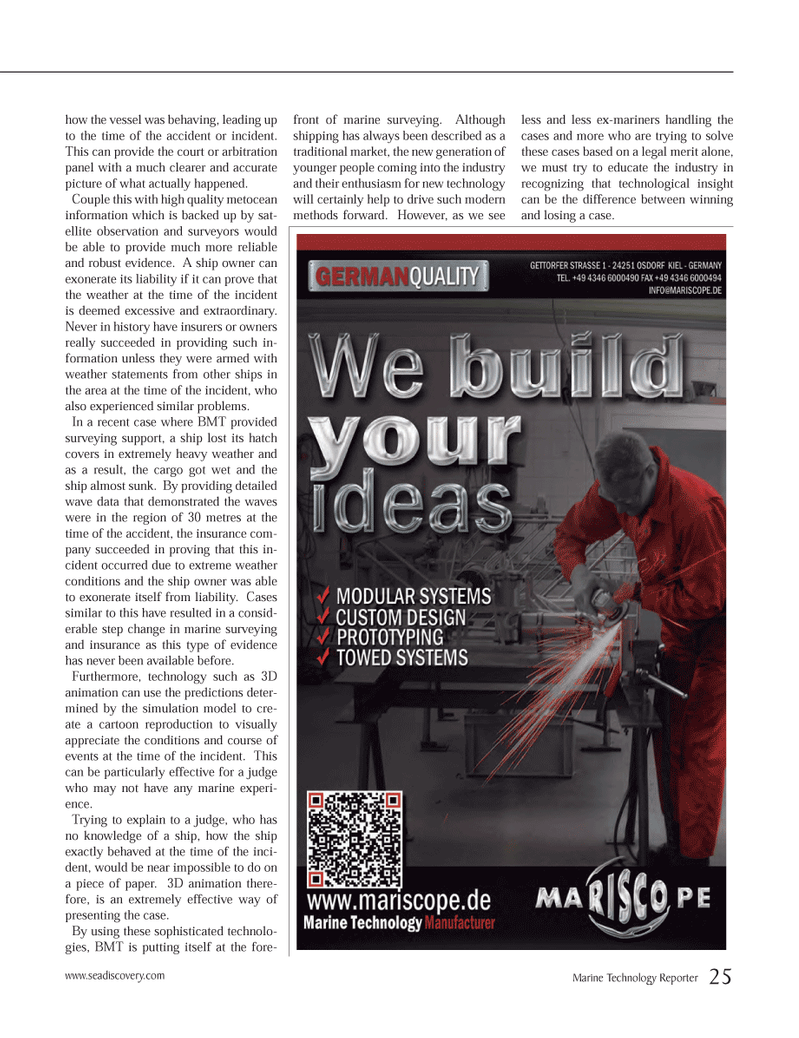
Page 25: of Marine Technology Magazine (October 2012)
Ocean Observation: Gliders, buoys & sub surface monitoring networks
Read this page in Pdf, Flash or Html5 edition of October 2012 Marine Technology Magazine
how the vessel was behaving, leading up to the time of the accident or incident. This can provide the court or arbitration panel with a much clearer and accurate picture of what actually happened. Couple this with high quality metocean information which is backed up by sat- ellite observation and surveyors would be able to provide much more reliable and robust evidence. A ship owner can exonerate its liability if it can prove that the weather at the time of the incident is deemed excessive and extraordinary. Never in history have insurers or owners really succeeded in providing such in- formation unless they were armed with weather statements from other ships in the area at the time of the incident, who also experienced similar problems. In a recent case where BMT provided surveying support, a ship lost its hatch covers in extremely heavy weather and as a result, the cargo got wet and the ship almost sunk. By providing detailed wave data that demonstrated the waves were in the region of 30 metres at the time of the accident, the insurance com-pany succeeded in proving that this in- cident occurred due to extreme weather conditions and the ship owner was able to exonerate itself from liability. Cases similar to this have resulted in a consid- erable step change in marine surveying and insurance as this type of evidence has never been available before. Furthermore, technology such as 3D animation can use the predictions deter- mined by the simulation model to cre-ate a cartoon reproduction to visually appreciate the conditions and course of events at the time of the incident. This can be particularly effective for a judge who may not have any marine experi- ence. Trying to explain to a judge, who has no knowledge of a ship, how the ship exactly behaved at the time of the inci- dent, would be near impossible to do on a piece of paper. 3D animation there- fore, is an extremely effective way of presenting the case. By using these sophisticated technolo-gies, BMT is putting itself at the fore-front of marine surveying. Although shipping has always been described as a traditional market, the new generation of younger people coming into the industry and their enthusiasm for new technology will certainly help to drive such modern methods forward. However, as we see less and less ex-mariners handling the cases and more who are trying to solve these cases based on a legal merit alone, we must try to educate the industry in recognizing that technological insight can be the difference between winning and losing a case. www.seadiscovery.com Marine Technology Reporter 25MTR #8 (18-33).indd 25MTR #8 (18-33).indd 2510/3/2012 9:44:30 AM10/3/2012 9:44:30 AM

 24
24

 26
26
